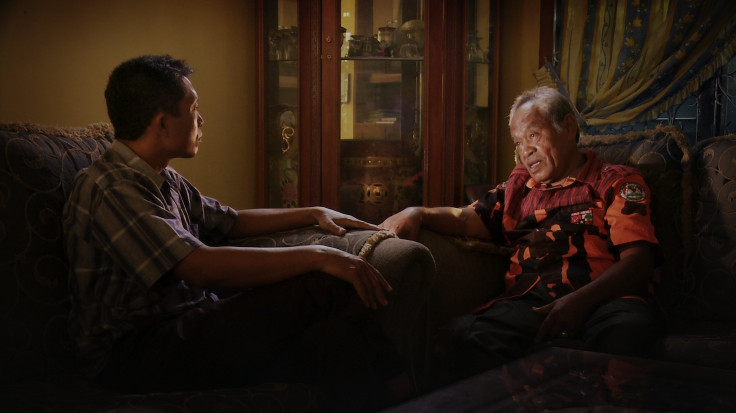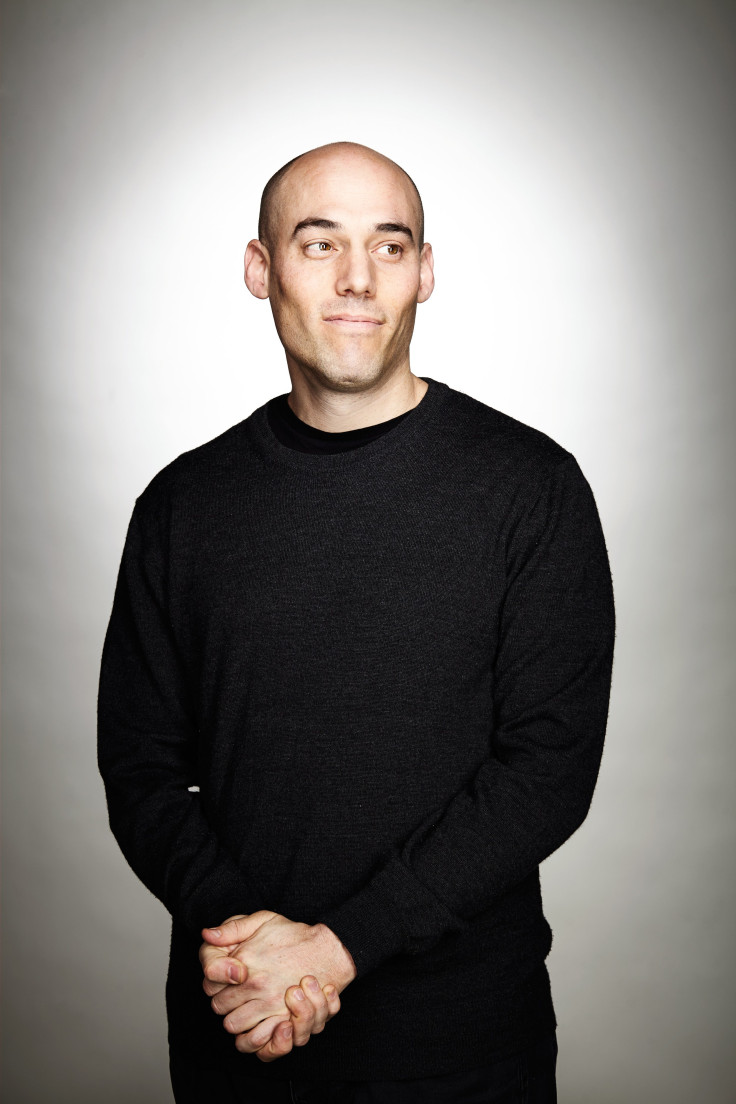'The Look Of Silence' Review: Joshua Oppenheimer's Followup Documentary To 'The Act Of Killing' Is 'A Poem To Memory And Oblivion'

What would a society look like if men who perpetrated the genocide of almost a million citizens were still in power and lived among the families of their victims, who are in fear for their lives and unable to speak about their losses?
Joshua Oppenheimer showed us one part of modern-day Indonesia under those conditions in the voices of the perpetrators in the surreal, genre-busting Oscar-nominated 2013 documentary "The Act of Killing." And in its companion piece, "The Look of Silence," which opens in New York City July 17, he follows 40-something Adi, whose brother was murdered by a death squad, as he confronts the killers who are in various positions of power.
In 1965, the Indonesian government led by President Sukarno was overthrown by the military and replaced by right-wing Gen. Suharto. The Indonesian Communist Party, which had supported the non-communist Sukarno, was immediately banned. After the coup, anyone who opposed the new military dictatorship could be accused of being a communist, including union organizers and intellectuals. In less than a year, more than a million accused communists were murdered, and to this day, the former leaders of the paramilitary death squads in Indonesia are teachers, mayors and government leaders, living among and ruling the families of their victims.
To enter the reality Oppenheimer depicts of modern-day Indonesia is to enter a kind of madness, and he proves that he is up to the task of meeting that extremity with documentaries that break free from that genres conventions while creating their own dream-like logic. In "The Act of Killing," in place of authoritative talking heads who would deliver the facts about the genocide in 1965 Indonesia, Oppenheimer lets the death squad leaders not only tell their story, but also act out the killings in lurid mini-movies in the genres of their choice, from gangster films to musicals, one of which features a former death squad leader in drag with backup dancers.
"With the 'The Act of Killing,' it’s not even a documentary at all anymore, but a fever dream in which we get lost with Anwar and the perpetrators and the paramilitary movement in a kind of kaleidoscope of lies and fantasies and fictions that make them who they are, and their regime what it is," Oppenheimer told International Business Times. "These are often secondhand, third-rate, half-remembered escapist fantasies borrowed from television and cinema."
But "The Look of Silence" is not about the fevered fantasies of the winners, but the cold, hard suffering of their victims. In 1965, Adi's mother Rohani’s older son Ramli was rounded up, tortured and executed, but not before he escaped and returned to his mother’s house, nearly eviscerated, begging for help. There was nothing she could do. He was recaptured and murdered.
"You can see me, but I can't see you," Rohani says to Ramli's ghost, in one of many heartbreaking scenes in "The Look of Silence" in which she compulsively recounts the details of her son's murder as if it happened yesterday. Compared to the manic, hysterical volubility and performativity of the death squad leaders in "The Act of Killing," "The Look of Silence" quietly shows us the faces of those who had to witness their atrocities and listen to their lies. It also depicts the haunted spaces of empty landscape that make up much of the film, standing in for those lost and what is not spoken.
Rohani enlists her son Adi, a 40-something optometrist, in soothing her pain. He, too, is haunted by the death of the brother he never knew and is told his whole life by his mother that if he’d not been born to replace Ramli, she would have gone mad. Adi interviews some of the death squad leaders responsible for his brother's death as he's fitting them for glasses, a visual reminder that what they tell us is filtered through denials and justifications that Adi attempts to "correct" with his confrontation.
"I shot the film in 2012 after editing the 'Act of Killing,' " Oppenheimer told IBTimes. He had been in Indonesia in 2001 filming a documentary about oil palm farmers' struggles to form a union -- a struggle informed by their terror that at any moment they could be accused of communism by the very people who eradicated their families in 1965. After 2002's "The Globalisation Tapes" was competed, he returned in 2003 -- at the behest of the Indonesians he met -- to begin interviewing death squad leaders for "The Act of Killing."
"I didn’t know Adi would be the main character in my film ['The Look of Silence']," Oppenheimer said. "I only knew he’d be my main collaborator. I asked him, what do you think I should do for the second film?" Adi had watched seven years of Oppenheimer's interview footage of dozens of perpetrators, and told him, "I need to meet with the men who killed my brother and see if they would take responsibility for what they’ve done. If I come without anger, then maybe we can live together in a different way."
Each confrontation is fraught with danger, as Adi speaks with men personally responsible for untold numbers of deaths; some even admit drinking their victims' blood in a ritual to stave off insanity. Flashes of anger in the perpetrators' eyes tell the viewer that at any moment Adi and the film crew behind him could be their next victims. One former death squad leader even suggests that the documentary being filmed is the work of secret communists. There were multiple getaway cars and contingency plans for Adi and his family to escape the country with each filmed confrontation, Oppenheimer told IBTimes.
As for Oppenheimer, he cannot safely return to Indonesia, now that "The Act of Killing" has been disseminated there.
Although both of Oppenheimer's documentaries tell an important story about modern-day Indonesia and the crimes that have shaped it, and in fact are helping to bring about the beginnings of "truth, justice and reconciliation" there, as Oppenheimer puts it, they do so while subverting the genre's conventions and its attachment to presenting so-called unvarnished facts.

"The borderline between documentary and fiction is blurred in Joshua's film," executive producer of both "The Act of Killing" and "The Look of Silence," the documentary film legend Werner Herzog ("Grizzly Man," "My Best Fiend"), says of the former film in a Vice interview. "But whatever documentary is, it is not adult education," he says. "Facts do not constitute truth."
Documentary film is "journalism plus," says Errol Morris ("Thin Blue Line," "The Fog of War") in the same interview. Morris also served as executive producer of both films. "You’re entering into the idea of something. Exploring something.” The stylized, fictive qualities of Oppenheimer's documentaries allow the viewer to explore the film's subject in more poetic, emotionally engaging ways than mere facts trotted out by experts could.
When asked why the U.S.'s complicity in training the Indonesian death squads was not given more focus in "The Look of Silence," Oppenheimer's answer echoed Morris' and Herzog's views of documentary.
"'The Look of Silence' is not about what happened in 1965. It’s not a historical documentary. It’s not about genocide. It's not a historical primer to yet another U.S.-sponsored Cold War atrocity that the audience knows little about and will care little about. It’s about the present. What is it like for survivors and human beings in general to have to live half a century in fear. What is it like when survivors have to live surrounded by the still powerful men who killed their loved ones. It’s a poem about memory and oblivion in this context of total impunity."
© Copyright IBTimes 2025. All rights reserved.






















